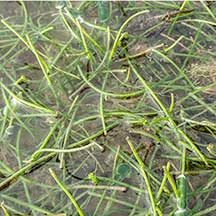 |
|
|
seagrasses
text index | photo
index
|
| Seagrasses > Family Cymodoceaceae |
| Noodle
seagrass Syringodium isoetifolium Family Potamogetonaceae updated Mar 14
Where seen? This seagrass is abundant on Pulau Semakau, growing among the more dominant Tape seagrass (Enhalus acoroides), and on Cyrene Reef. Noodle seagrass is found throughout the tropical Indo-West Pacific region. Elsewhere, it can form thick tall stands without any other seagrass species. It can also grow among other seagrasses species, where it is then smaller. It is rarely found in shallow intertidal areas. It appears to respond rapidly to increased nutrient availability. Features: Leaves of those seen were 5-10cm long, but elsewhere, they can grow to 50cm long. The seagrass has tubular leaves much like a thick noodle! Unlike other seagrasses that are flat, noodle seagrass is circular in cross-section. The leaves have a smooth pointed tip. The rhizomes (underground stems) are slender (1.5mm in diameter). Shoots emerge from these rhizomes, each shoot with 2-3 leaves, the lower portions encased in a sheath. Longer shoots tend to be branched and found in calmer waters. As the leaves contain air cavities, they float easily when detached. Older leaves tend to break off as they become brittle. Elsewhere, these may form dense rafts that float and wash ashore. Sometimes confused with Needle seagrass (Halodule sp.). While both are long and narrow, noodle seagrass, however, is cylindrical like plastic tubing or noodles, while needle seagrass is flat like a ribbon. Flowers and fruits: Noodle seagrass has separate male and female plants. The flowers form a complex inflorescence (called a cyme). Each flower forms in a branching array on a stem. The fruit forms a small nut that is hard and beaked. An inflorescence with mature seeds may break off and float away some distance. Role in the habitat: Dugongs graze on this seagrass where there are no Halophila or Halodule seagrasses available. So it is also sometimes called Dugong grass. Status and threats: It is listed as 'Endangered' on the Red List of threatened plants of Singapore. |
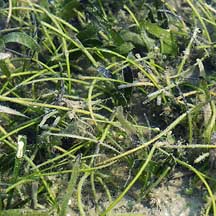 Pulau Semakau, Mar 05 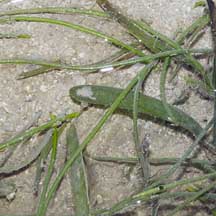 Pulau Semakau, Jun 05 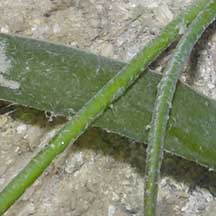 Pulau Semakau, Jun 05 |
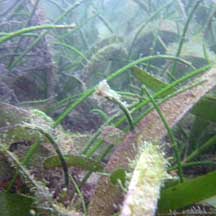 Terumbu Semakau, May 10 |
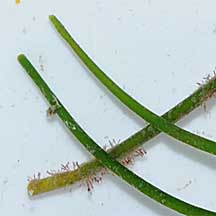 Cyrene Reef, Oct 08 |
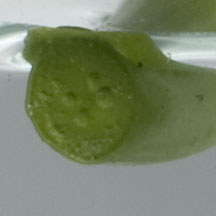 Cyrene Reef, Aug 11 |
| Noodle seagrass on Singapore shores |
| Photos of Noodle seagrass for free download from wildsingapore flickr |
| Distribution in Singapore on this wildsingapore flickr map |
| Other sightings on Singapore shores |
Links
|
